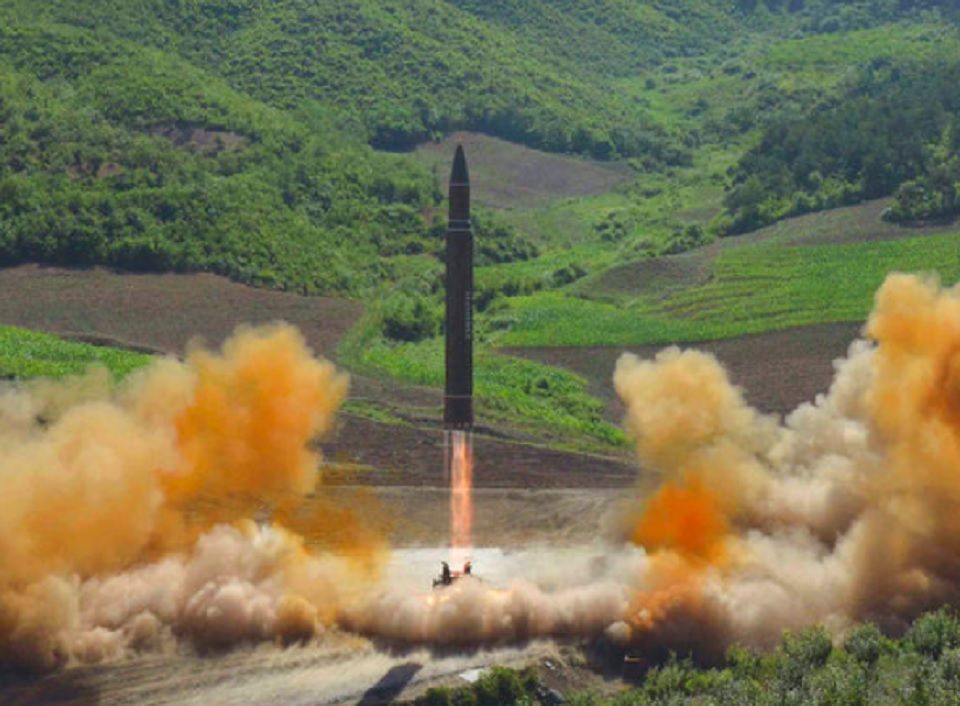A disaster at North Korea’s main nuclear testing site has left around 200 people dead, according to Japanese reports, and experts fear the collapse could “spread radioactive material around an entire hemisphere.”
Around 100 people were killed when when an unfinished tunnel collapsed at Kim Jong-un’s main nuclear testing site, prompting a scramble in which 100 people subsequently died while attempting to rescue the first group of entombed workers.
Foreign experts had warned a collapse was likely, highlighting the danger of a cloud of radioactive fallout escaping from the site and spreading across “an entire hemisphere” with catastrophic consequences.
Express reports: The disaster was revealed by Japan’s TV Asahi today, although they could not clarify when the accident and subsequent doomed rescue attempts took place.
They said North Korean sources told them the collapse occurred as workers were working on the new tunnel. A second collapse took place as workers tried to rescue their colleagues.
Punggye-ri was the site of North Korea’s sixth-ever nuclear test on September 3. They tested a huge 100-kiloton explosive which was around seven times as powerful as the bomb dropped on Hiroshima during WW2.
This test is blieved to have badly destabalised the mountainside-based facility.
Foreign experts and human rights activists had warned this month, however, of the danger of despot Kim Jong-un’s crumbling facilities.
North Korea’s detonated its first ever H-bomb in September, causing serious damage to the facility’s foundations.
Subsequent small earthquakes have since indicated the area was becoming increasingly unstable.
The Punggye-ri test site is built into Mount Mantap, extending deep within the mountain.
While the exact locations of the nuclear tests themselves remain a mystery, seismologists believe they can pinpoint it to a 100 metre area.
While a test site could be operate safely at such a location, unsophisticated engineers are believe to have increased the risk of disaster with crude drilling techniques.
China issued a dire warning to Kim regarding the state of the nuclear testing site.
They said a cloud of nuclear fallout could spread across “an entire hemisphere” if the facility collapsed.
The Chinese Academy of Sciences’ Institute of Geology and Geophysics warned: “China cannot sit and wait until the site implodes.
“Our instruments can detect nuclear fallout when it arrives, but it will be too late by then.
“There will be public panic and anger at the government for not taking action.”
Chillingly, before news broke today of the collapse, they had warned such a collapse could spread radioactive material far and wide.
They said: “The fallout can spread to an entire hemisphere.”
Paul Richards, a seismologist at Columbia University’s Lamont-Doherty Earth Observatory, said: “What we are seeing from North Korea looks like some kind of stress in the ground.
“In that part of the world, there were stresses in the ground, but the explosions have shaken them up.”
On Monday South Korea also warned another nuclear test at the site could lead to a total collapse of the mountain facility, causing a deadly leak of radioactive materials.
Even if a radioactive leak does not occurr, the disaster is a huge blow to Kim. The new tunnel was likely necessary to help modernise the facility and its collapse will severely slow North Korea’s nuclear progress.
Monitoring group 38 North said this month: “If North Korea were to attempt to continue testing under this mountain, such as in the area more to the eastern side, then we would expect to see new tunnelling in the future near the North Portal, still under Mount Mantap.”

